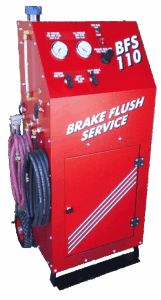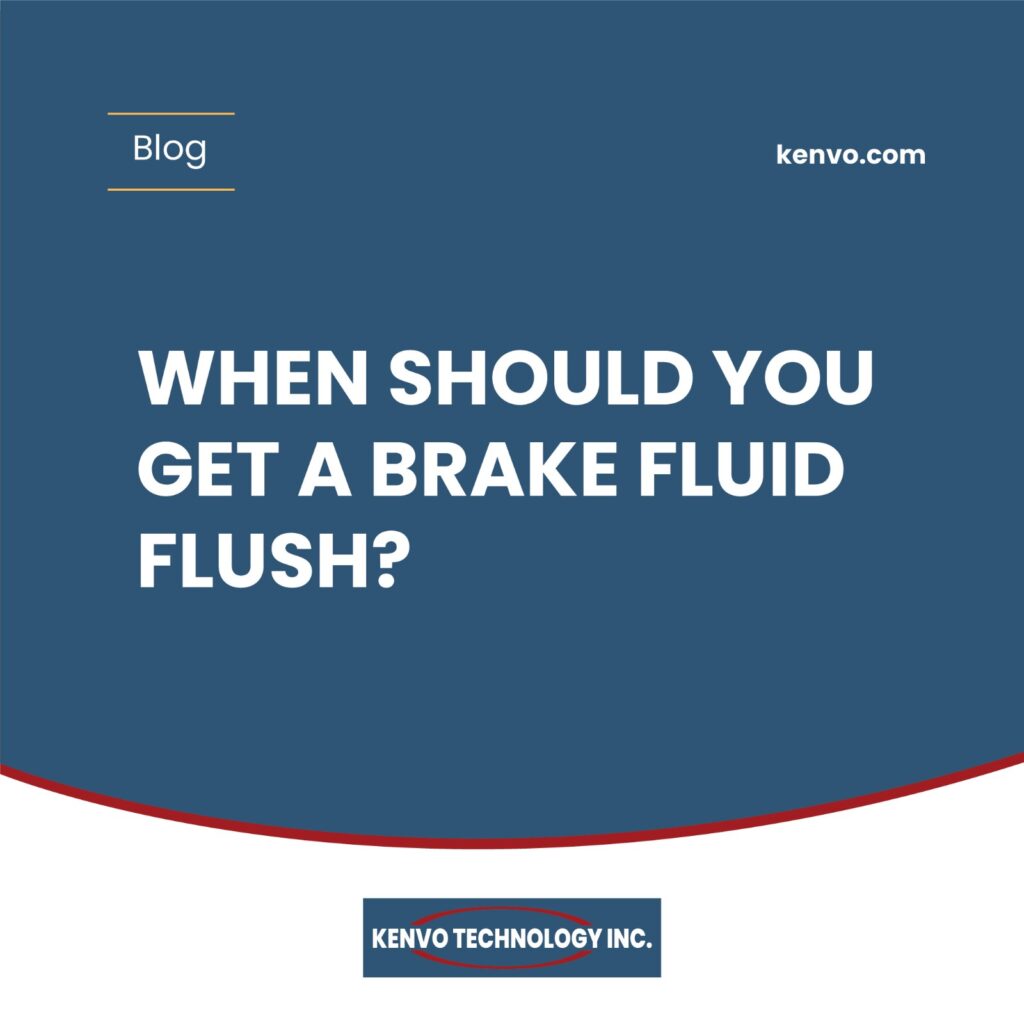Introduction: Why Timing Is More Important Than You Think
Most drivers are diligent about oil changes, tire rotations, and even air filter swaps, but brake fluid? That’s a silent hero most people forget until it’s too late.
Imagine sprinting toward a wall and trusting a rope to stop you. Over time, that rope frays. You might not see the damage, but the day it fails, the consequences are immediate. Brake fluid works much the same way: it’s an unseen lifeline that, if compromised, could cost you control, safety, and thousands in repairs.
In this guide, you’ll learn:
- What brake fluid does (and why it’s not just “liquid in a tube”)
- Why and how it degrades
- How often experts recommend flushing
- Signs you shouldn’t ignore
- DIY vs. professional options
- Climate-specific schedules
- Real customer cautionary tales
(Learn more about Kenvo’s Brake Flush Machine Service and how it ensures a complete, contamination-free fluid exchange.)

1. Understanding Brake Fluid: The Silent Safety Hero
1.1 The Physics of Stopping
Brake fluid is a hydraulic medium—it doesn’t compress under pressure, so the force you apply to the brake pedal transfers instantly to the brake pads, squeezing the rotors and slowing your car.
This transfer follows Pascal’s Law, which says that pressure applied to a confined fluid is transmitted equally in all directions. Without a clean, healthy fluid, this law breaks down—air bubbles or moisture create compressibility, leading to “mushy” brakes.
1.2 Glycol-Based Fluids
Most vehicles use DOT 3, DOT 4, or DOT 5.1 brake fluid—these are glycol-based, meaning they actively absorb water from the air (hygroscopic). This prevents water from pooling and freezing in one spot, but it also means fluid slowly becomes diluted, lowering its boiling point.
1.3 What Happens When It Boils
When fluid boils, it produces vapor—gas can compress, unlike liquid. This results in vapor lock, a terrifying moment where your brake pedal drops but the car barely slows.
(Discover how Kenvo’s BFS 125 system prevents boiling risks by ensuring complete moisture removal.)
2. Why Brake Fluid Degrades Over Time
2.1 Moisture Absorption
Even with a sealed system, tiny amounts of water seep in through:
- Rubber brake hoses (micropores)
- Reservoir caps during maintenance
- Hose fittings under pressure changes
A study by the SAE found that moisture content rises by 2%–3% in the first two years. That’s enough to cut boiling point by 50–100°F.
2.2 Thermal Cycling
Urban drivers stop and start 50–100 times during a single commute. Each brake application heats the fluid. Over time, these heat cycles break down additives designed to prevent corrosion.
2.3 Contamination
Corrosion particles, dust, and microscopic rubber shavings from seals accumulate. In effect, dirty brake fluid becomes a liquid sandpaper—wearing down pistons, ABS valves, and seals.
2.4 Electrochemical Corrosion
Different metals in your brake system—like steel lines and aluminum ABS components—can create a galvanic reaction in moisture-laden fluid, speeding corrosion.
(See Kenvo’s equipment lineup built to remove contaminated fluid and protect delicate ABS valves.)
3. How Often Should You Flush Brake Fluid?
There’s no “one-size-fits-all” answer, but here’s an expert-backed breakdown:
| Driving Style | Climate | Recommended Interval | Why It Matters |
| Weekend driving only | Dry | Every 3 years | Minimal heat & moisture |
| City commute | Humid | Every 2 years | Heat + high moisture absorption |
| Mountain driving | Any | Every 18–24 months | Steep descents cause extreme heat |
| Track days/towing | Any | Every 12–18 months | Maximum stress on system |
| Coastal living | Humid/salty | Every 18–24 months | Salt corrosion risk |
Pro Tip: Check your owner’s manual. If you drive in Canada’s harsh winters or humid coastal climates, stick to the shorter end of these intervals.
(For Edmonton drivers, here’s Kenvo’s local brake flush service designed for extreme cold.)
4. Signs You Need a Flush Now
Even if your mileage is low, these signs are red flags:
- Spongy brake pedal feel – Air or vapor in lines
- Dark, murky fluid – Contamination buildup
- ABS warning light – Possible valve malfunction from debris
- Corrosion in master cylinder – Fluid’s protective additives depleted
- Longer stopping distance – Moisture has lowered boiling point
5. Real-World Case Studies
Case 1 – Alberta Winter Failure:
A 2013 pickup with 120,000 km never had a brake fluid service. During a -25°C cold snap, ice crystals formed in the lines, locking one rear brake and rendering ABS inoperative. Repair: $2,400.
Case 2 – Vancouver Island Corrosion:
Moisture-rich air plus old brake fluid caused pitting in the brake master cylinder. Replacement: $850—preventable with a $150 flush.
6. DIY vs. Professional Flush
6.1 DIY Advantages
- Lower upfront cost
- Flexible fluid choice
- Learning experience
6.2 DIY Disadvantages
- Risk of incomplete flush
- Air bubble introduction
- No way to properly pressure-test system afterward
6.3 Professional Advantages
- Full-system exchange with controlled pressure
- ABS-safe operation
- Proper hazardous waste disposal
( Learn about Kenvo’s Brake Flush Machine Service that guarantees a full fluid replacement in under 45 minutes.)
7. Climate & Driving Style Adjustments
A high-performance sports car in humid Miami needs a very different brake maintenance schedule than a commuter sedan in dry Calgary.
- Hot + Urban: Faster degradation from stop-and-go heat
- Cold + Salty Roads: Moisture + salt accelerate corrosion
- Mountain Roads: Long downhill braking boils fluid faster
8. Brake Fluid Types: What You Need to Know
| Type | Dry Boiling Point | Wet Boiling Point | Service Life |
| DOT 3 | 401°F | 284°F | 2 years |
| DOT 4 | 446°F | 311°F | 2–3 years |
| DOT 5.1 | 500°F | 356°F | 2 years |
| DOT 5 (Silicone) | 500°F | N/A | 5+ years |
9. Environmental Responsibility
Used brake fluid is hazardous. Pouring it down a drain can contaminate thousands of liters of water. Professionals use sealed recovery tanks and approved disposal services.
(Kenvo’s eco-friendly flushing systems protect both your brakes and the environment.)
Summary & Call to Action
Brake fluid flushing isn’t optional—it’s essential for safety and cost control. Waiting too long risks your braking power, your ABS health, and your wallet.
(Schedule a Kenvo brake flush today to ensure your system is moisture-free and fully protected.)

